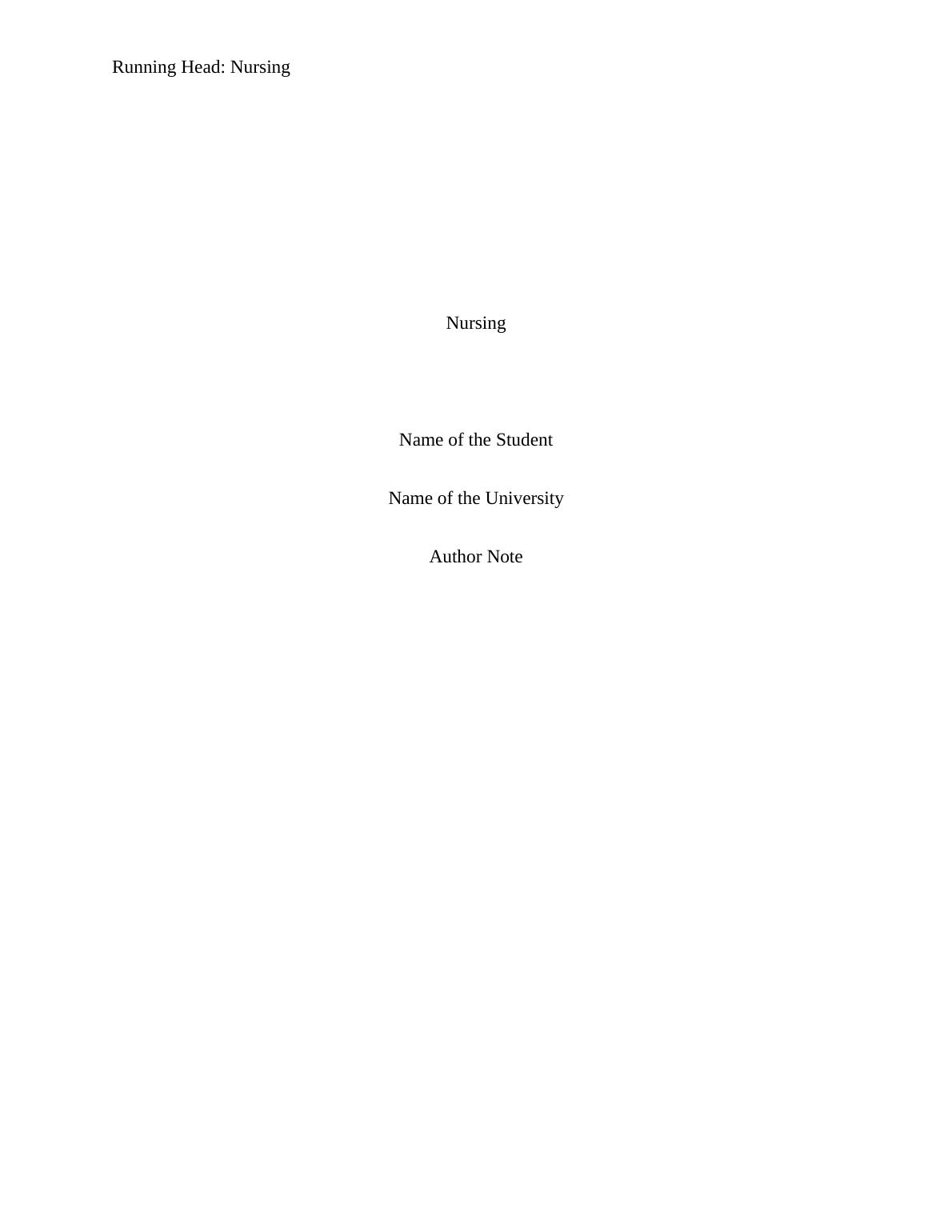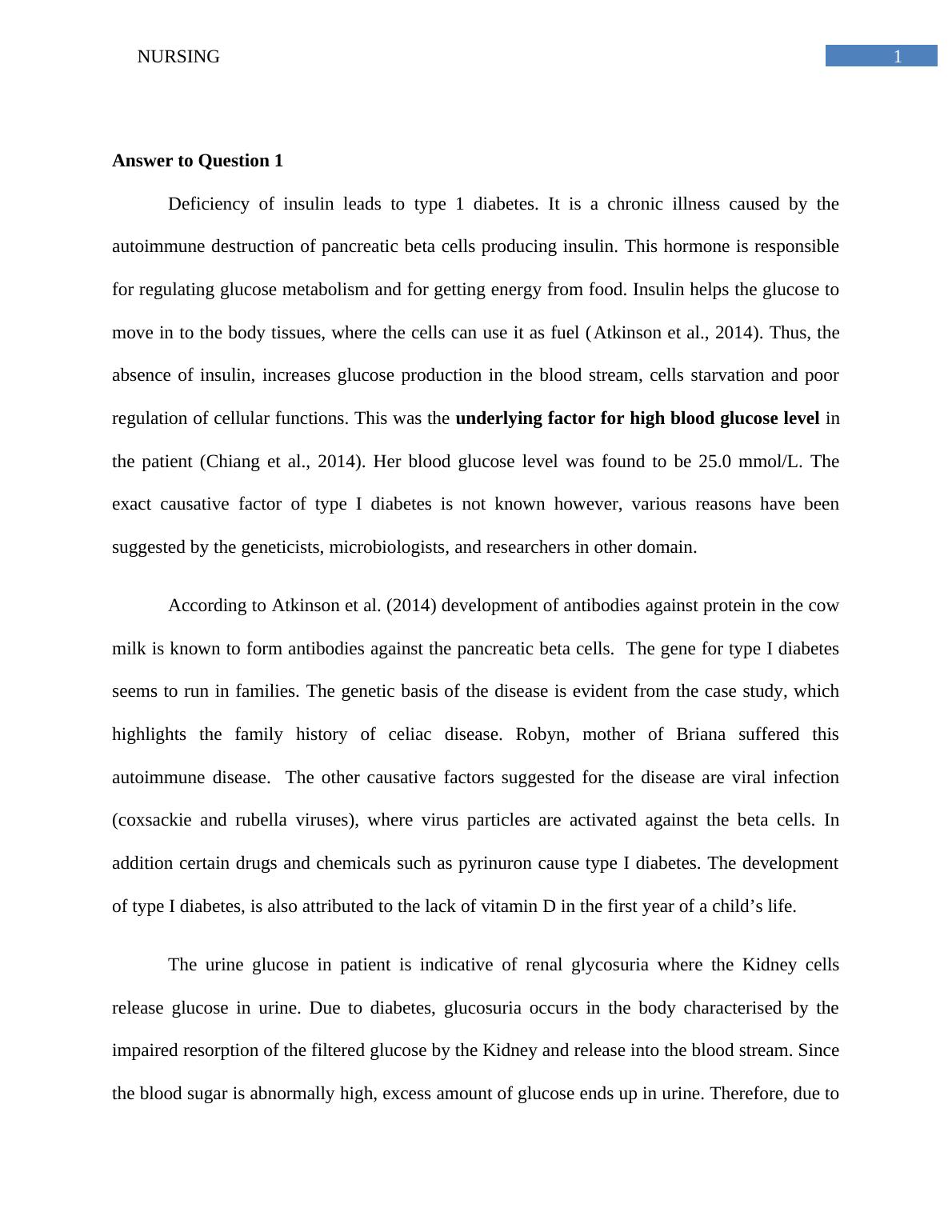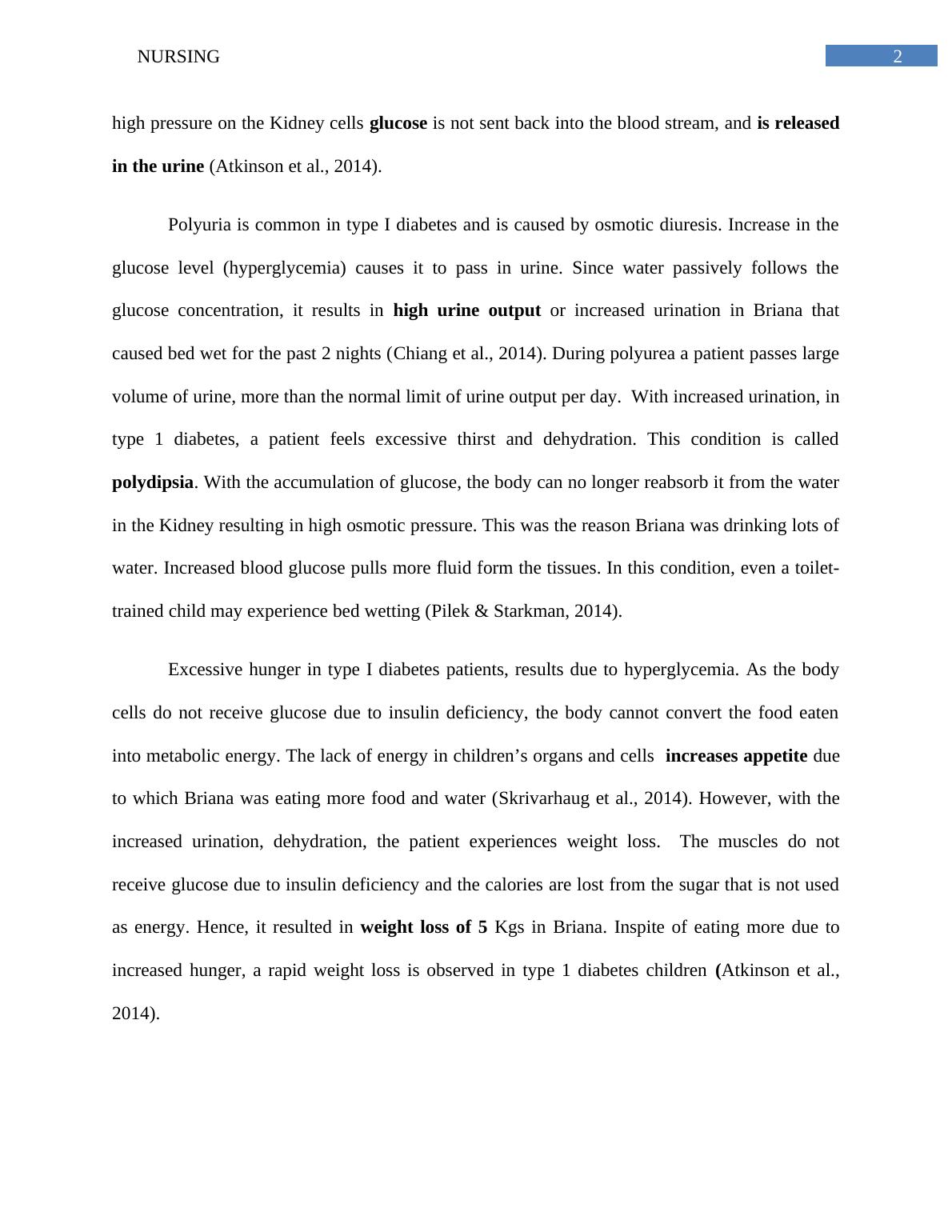401014 - Health Variations Nursing - WSU
Added on 2020-03-04
9 Pages2291 Words80 Views
Running Head: Nursing Nursing Name of the StudentName of the UniversityAuthor Note

1NURSINGAnswer to Question 1Deficiency of insulin leads to type 1 diabetes. It is a chronic illness caused by theautoimmune destruction of pancreatic beta cells producing insulin. This hormone is responsiblefor regulating glucose metabolism and for getting energy from food. Insulin helps the glucose tomove in to the body tissues, where the cells can use it as fuel (Atkinson et al., 2014). Thus, theabsence of insulin, increases glucose production in the blood stream, cells starvation and poorregulation of cellular functions. This was the underlying factor for high blood glucose level inthe patient (Chiang et al., 2014). Her blood glucose level was found to be 25.0 mmol/L. Theexact causative factor of type I diabetes is not known however, various reasons have beensuggested by the geneticists, microbiologists, and researchers in other domain. According to Atkinson et al. (2014) development of antibodies against protein in the cowmilk is known to form antibodies against the pancreatic beta cells. The gene for type I diabetesseems to run in families. The genetic basis of the disease is evident from the case study, whichhighlights the family history of celiac disease. Robyn, mother of Briana suffered thisautoimmune disease. The other causative factors suggested for the disease are viral infection(coxsackie and rubella viruses), where virus particles are activated against the beta cells. Inaddition certain drugs and chemicals such as pyrinuron cause type I diabetes. The developmentof type I diabetes, is also attributed to the lack of vitamin D in the first year of a child’s life. The urine glucose in patient is indicative of renal glycosuria where the Kidney cellsrelease glucose in urine. Due to diabetes, glucosuria occurs in the body characterised by theimpaired resorption of the filtered glucose by the Kidney and release into the blood stream. Sincethe blood sugar is abnormally high, excess amount of glucose ends up in urine. Therefore, due to

2NURSINGhigh pressure on the Kidney cells glucose is not sent back into the blood stream, and is releasedin the urine (Atkinson et al., 2014). Polyuria is common in type I diabetes and is caused by osmotic diuresis. Increase in theglucose level (hyperglycemia) causes it to pass in urine. Since water passively follows theglucose concentration, it results in high urine output or increased urination in Briana thatcaused bed wet for the past 2 nights (Chiang et al., 2014). During polyurea a patient passes largevolume of urine, more than the normal limit of urine output per day. With increased urination, intype 1 diabetes, a patient feels excessive thirst and dehydration. This condition is calledpolydipsia. With the accumulation of glucose, the body can no longer reabsorb it from the waterin the Kidney resulting in high osmotic pressure. This was the reason Briana was drinking lots ofwater. Increased blood glucose pulls more fluid form the tissues. In this condition, even a toilet-trained child may experience bed wetting (Pilek & Starkman, 2014).Excessive hunger in type I diabetes patients, results due to hyperglycemia. As the bodycells do not receive glucose due to insulin deficiency, the body cannot convert the food eateninto metabolic energy. The lack of energy in children’s organs and cells increases appetite dueto which Briana was eating more food and water (Skrivarhaug et al., 2014). However, with theincreased urination, dehydration, the patient experiences weight loss. The muscles do notreceive glucose due to insulin deficiency and the calories are lost from the sugar that is not usedas energy. Hence, it resulted in weight loss of 5 Kgs inBriana. Inspite of eating more due toincreased hunger, a rapid weight loss is observed in type 1 diabetes children (Atkinson et al.,2014).

End of preview
Want to access all the pages? Upload your documents or become a member.
Related Documents
Function of Synthesis of Insulin - MELS230lg...
|6
|2220
|58
High Blood Glucose Level Assignmentlg...
|10
|2139
|44
Module 2 Assignment: Immune System Disorderslg...
|6
|1647
|21
Case Study on Type 1 Diabeteslg...
|10
|2235
|50
Case-study on Diabities - 401015lg...
|7
|2106
|46
Diabetes Mellitus Assignment (PDF)lg...
|6
|1777
|278